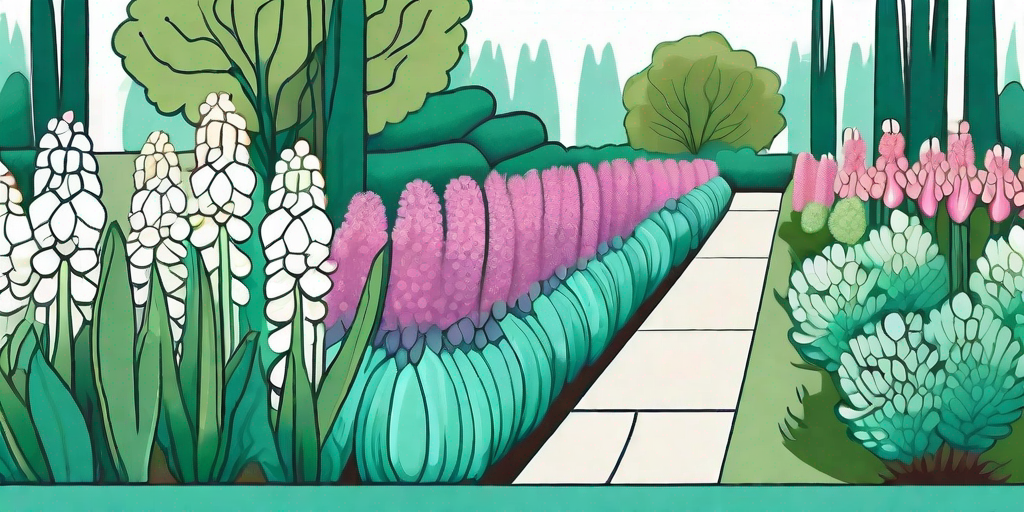
If your garden is looking a bit dull and dreary, fear not! With a little bit of effort and a handful of hyacinth bulbs, you can turn your outdoor space into a vibrant, fragrant paradise. But how, you ask? Well, sit tight and buckle up, because we're about to embark on a horticultural journey that's as exciting as it is enlightening.
Understanding the Magic of Hyacinths
The Aesthetics
First things first, let's talk about the sheer beauty of hyacinths. These perennials are a sight for sore eyes with their lush, star-shaped flowers that come in a variety of colours. From the softest pastels to the most vibrant hues, there's a hyacinth for every palette.
And it's not just the visual appeal that makes hyacinths a garden must-have. These flowers are known for their intoxicating fragrance that can fill your entire garden with a sweet, refreshing scent. Imagine stepping out into your garden and being greeted by a waft of floral perfume. Sounds divine, doesn't it?
The Versatility
Hyacinths are not just pretty faces. These hardy little plants are incredibly versatile and can be grown in a variety of settings. Whether you have a sprawling backyard, a compact balcony, or even an indoor garden, hyacinths can add a touch of elegance and charm.
They're also great for both beginner and seasoned gardeners. Hyacinths are relatively easy to grow and maintain, making them a perfect choice for those who are new to gardening. And for the green thumbs out there, the potential for creativity with hyacinths is boundless.
How to Grow Hyacinths
Choosing the Right Bulbs
Like any good story, growing hyacinths starts with a solid foundation - the bulbs. When choosing hyacinth bulbs, look for ones that are firm and plump, with no signs of mould or damage. The bigger the bulb, the bigger the bloom, so don't be shy to go for the big guys.
Once you've got your bulbs, it's time to get planting. Hyacinths are typically planted in the fall, a few weeks before the first frost. This gives them enough time to establish roots before the winter sets in.
Planting the Bulbs
When it comes to planting, hyacinths aren't too fussy. They like well-drained soil and a sunny or partially shaded spot. Dig a hole about three times the height of the bulb and place it in the hole with the pointy end facing up. Cover with soil and water well.
And voila! You've planted your first hyacinth bulb. Now all you have to do is wait for spring to see your garden come alive with colour and fragrance.
Hyacinth Care and Maintenance
Watering and Fertilizing
Hyacinths are pretty low maintenance, but they do appreciate a bit of TLC. Water your hyacinths regularly, but be careful not to overwater as this can lead to bulb rot. A layer of mulch can help retain moisture and keep the soil cool.
As for fertilizing, a balanced flower fertilizer applied in the early spring can give your hyacinths a boost and help produce bigger, more vibrant blooms.
Post-Bloom Care
After your hyacinths have bloomed, resist the temptation to cut back the foliage. The leaves need to remain in place to photosynthesize and replenish the bulb for next year's bloom. Once the leaves have yellowed and died back, they can be removed.
With the right care and attention, your hyacinths can provide you with many years of beauty and fragrance. Now that's what we call a garden transformation!
FAQs
- Can hyacinths grow in pots?
Yes, hyacinths can be grown in pots. Just make sure the pot has good drainage and is large enough to accommodate the bulb and its roots.
- Do hyacinths come back every year?
Yes, hyacinths are perennials, which means they can come back year after year. However, the blooms may become less vigorous over time.
- Are hyacinths deer resistant?
Yes, hyacinths are generally deer resistant. However, if food is scarce, deer may still nibble on them.
So there you have it - the lowdown on how hyacinth bulbs can transform your garden from drab to fab. Now it's time to roll up your sleeves, get your hands dirty, and start planting. Happy gardening!















